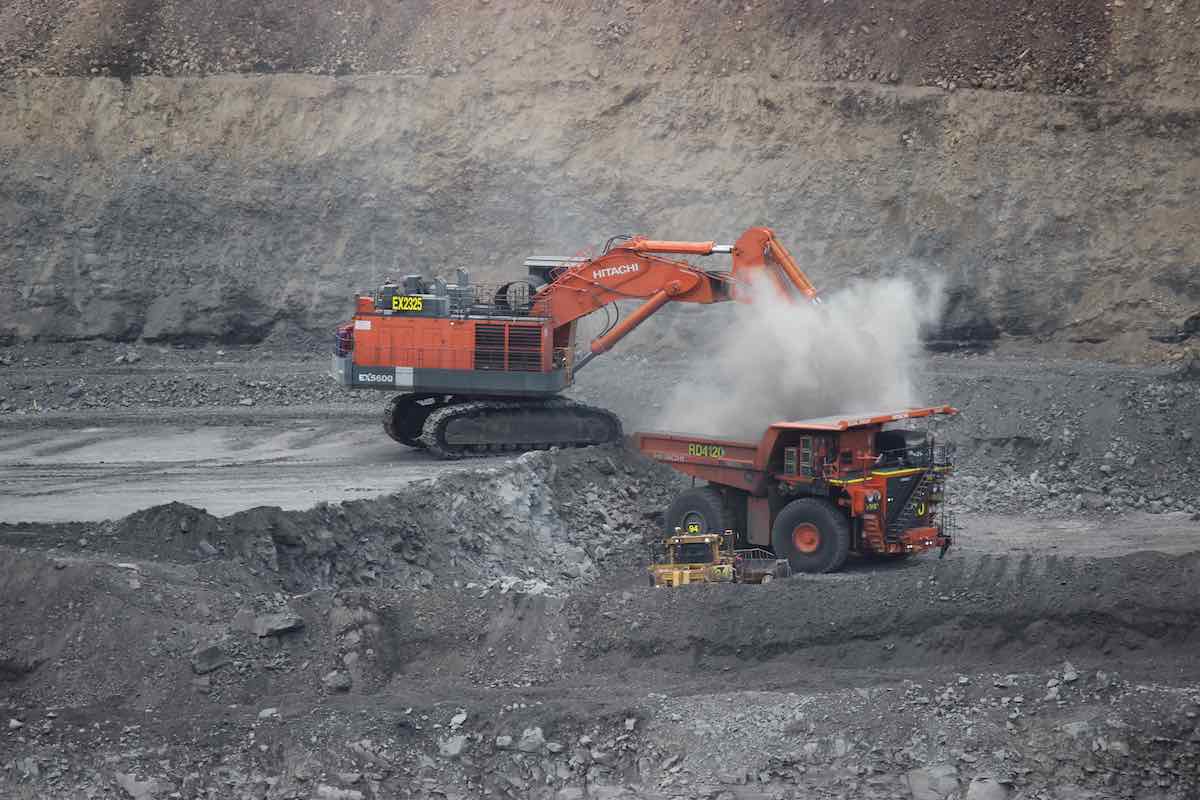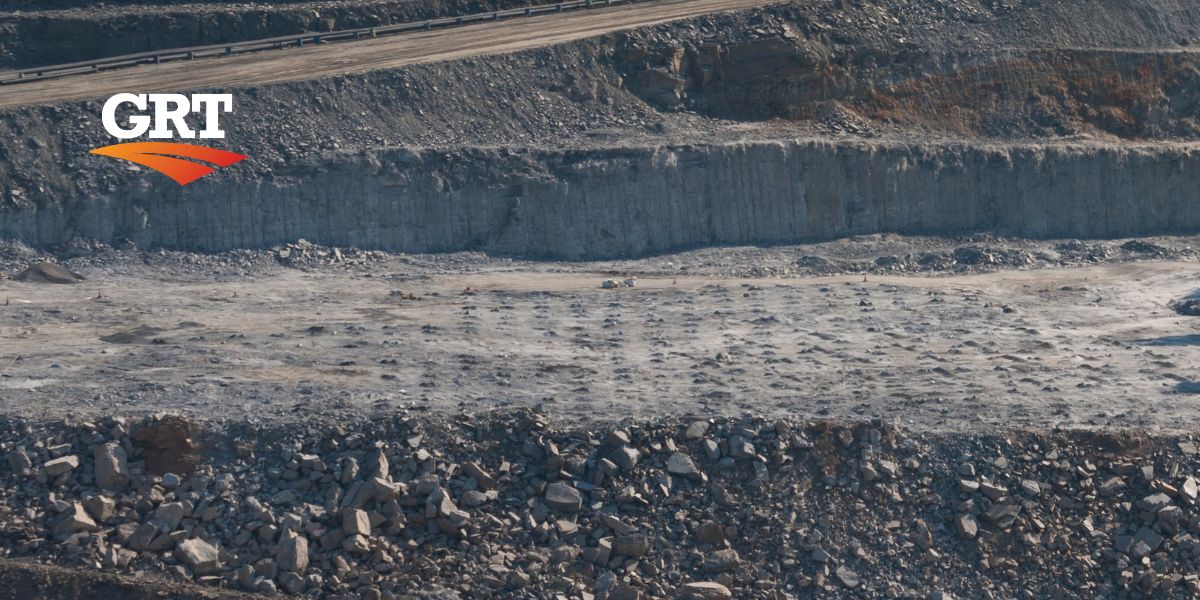Dust control in surface coal mines is critical as coal dust is one of the main health hazards for coal miners. Dust from coal as well as overburden and road surfaces is also a visibility hazard on haul roads, intersections, and the ROM. Coal mining generates dust via coal cutting, transport, crushing and milling. Exposure to coal dust is preventable through administrative controls and engineering controls. Recognised Standard 20 is a legislation based, administrative control for the safety and health of coal mine workers. It states how to get to an acceptable level of risk for people participating in coal mining operations. The Minister issued the document as Section 37(3) of the Coal Mining Safety and Health Act 1999. Coal dust chemistry plays a role in how effective dust control works in surface mines. Coal dust accounts for many health ailments. Asthma, chronic obstructive pulmonary disease, stunted lung development, pneumoconiosis, and lung cancer are pulmonary ailments. Cardiac arrhythmias and acute myocardial infarction are the heart conditions arising from coal dust exposure. The article will summarize recognised standards with emphasis on Recognised Standard 20. We will look at black lung and silicosis in Australia and address the problem. Global Road Technology will be evaluated. The engineering controls offered by Global Road Technology to manage coal and silica dust will be also discussed and evaluated.
What is Recognised Standard 20?
Department of Natural Resources, Mines and Energy released the Recognised Standard 20: Dust control in surface mines in 2019. The standard acknowledges the effects of dust to human life and changed the paradigm of coal dust control in Australia. Coal mine operators have an obligation to cut coal dust at its source. This pinnacle of coal dust suppression is part of the Coal Mining Safety and Health Act 1999. Risk management elements, procedures and practices allow safety and health management system efficiency.
The following must happen:
-
- ensure the safety and health of coal mine workers and visitors to the workplace are in place.
- effective management and control of dust through a dust management plan.
- consultation with coal mine workers about respirable dust risks.
- identify, analyse and assess airborne dust hazards and resultant risks.
- prevent unacceptable risks of airborne dust exposure and control residual dust risks.
- track levels of dust and review the effectiveness of dust risk control measures.
- investigate and analyse exposure results under Recognised Standard 14.
- Take appropriate corrective and preventative actions when control measures fail.
- review and audit the effectiveness of the dust management plan.

Are environmental regulations, health and safety concerns or potential profit loss a concern right now?
Site-specific dust control
The general strategy for dust control depends on the surface mining operation. Each surface mine must be able to identify sources of dust generation in all areas of the surface mine. All areas of the mine must have a well-developed dust control plan. The hierarchy of control principles must apply. This manages risk of dust exposure to acceptable limits. A process is then developed to mitigate personal exposure. This ensures contingencies are in place when critical dust controls are not working to their specifications. Key processes required to be in place are:
-
- Review and make sure dust controls are effective.
- Inspect, maintain and check controls under the eye of trained and competent personnel.
- Identify relevant engineering and technical expertise.
- Undertake short-term and long-term planning to manage dust controls.
The hierarchy of control from the base to the apex show dust control measures in order of their efficacy. For the purposes of our discussion, we focus on the apex of the hierarchy of controls. The apex has elimination of dust before it can occur. Elimination means suppressing dust at the point of its generation.
Effective dust management results in fewer silicosis and coal workers pneumoconiosis (CWP) cases. Silicosis develops from crystalline silica deposition in the lungs and airways. This leads to cancer, pulmonary tuberculosis and other airway diseases. Evidence suggests the induction of autoimmune disorders and chronic renal diseases. CWP, commonly referred to as black lung, results from inhaling coal dust that deposits in the lungs, but cannot be removed by the body. Over time, this dust causes scarring leading to fibrosis and reduced lung function. In severe cases, this leads to death. Questions still remain if historical assessments can unearth more misery as more unacceptable stories are brought to light. It is one case too many and a cause for concern for all stakeholders involved in the mining industry. Coal produces silica dust but of note is coal dust that can be of different ranks. Coal exists in five ranks in Queensland:
-
- semi-anthracite
- low volatile bituminous
- medium volatile bituminous
- high volatile bituminous
- sub-bituminous
In Queensland, open cast coal mining is more predominant than underground mining. Overexposure to coal mine dust accelerates the inevitable if dust management plans are not in place and effectively implemented. This affects the workforce, communities and the environment. Most discussions focus on these ailments in mine workers. The recent news of a mother-of-two that contracted silicosis from working close to (not in) a quarry is scary. It serves as a reminder of how failure to control dust at its source can affect communities as well as staff onsite. The dust management plan was not effective in eliminating dust at its source.
Best practice dust suppression

Global Road Technology offers practical solutions to coal dust suppression in surface mines from pit to port. GRT Activate UG and GRT Activate are coal dust suppression products that make water work. Water alone is not enough to achieve the elimination of coal dust at its source as the chemistry at the coal-face. The coal dust suppressant must not affect coal calorific values. Scenarios differ and Global Road Technology products remove coal dust at its source using these engineered coal dust surfactant technologies in shearing, conveying and stockpiling. GRT Haul-Loc for haul road dust suppression reduces cost, saves water while improve safety by managing dust. For dust generated from drill and blast activities GRT has tailored to managing drill cuttings and improving drill hole collaring. Heavy traffic, workshop, and logistics areas and even stockpile and rail car veneering are all elements that GRT can provide engineered solutions to meet the requirements of Recognised Standard 20: Dust Control in Surface Mines and deliver results that improve WHS and operational outcomes.
Your feedback is important to us. If you enjoyed reading this Global Road Technology industry update and found it informative, please let us know by leaving a REVIEW.
REFERENCES
- Department of Natural Resources, Mines and Energy. 2019. Recognised Standard 20. Dust control in surface mines.
- Kumar, D., and Kumar, D. 2018. Dust Control. Sustainable Management of Coal Preparation. Book Chapter. 265 – 278.
- Liu, T., and Liu, S. 2020. The impacts of coal dust on miners’ health: A review. 1 – 57.
- Thakur, L. 2019. Characteristics of Respirable Coal Dust Particles. Advanced Mine Ventilation. 105 – 122.
Troy Adams
Troy Adams is the Managing Director of Global Road Technology (GRT) Specialising in Engineered Solutions for Dust Suppression, Erosion Control, Soil Stabilisation and Water Management. A pioneering, socially conscious Australian entrepreneur, Troy Adams is passionate about health and safety and providing innovative solutions that are cost-effective to the mining industry, governments and infrastructure sectors. Troy is also a tech investor, director of companies like Crossware, Boost, Hakkasan, Novikov and more.

